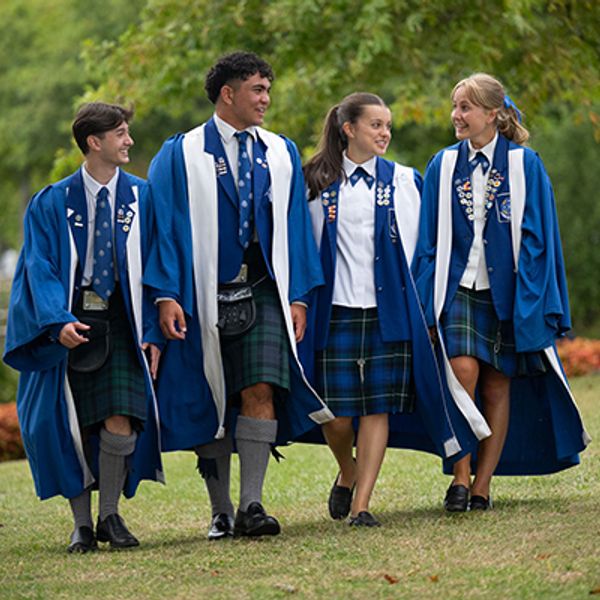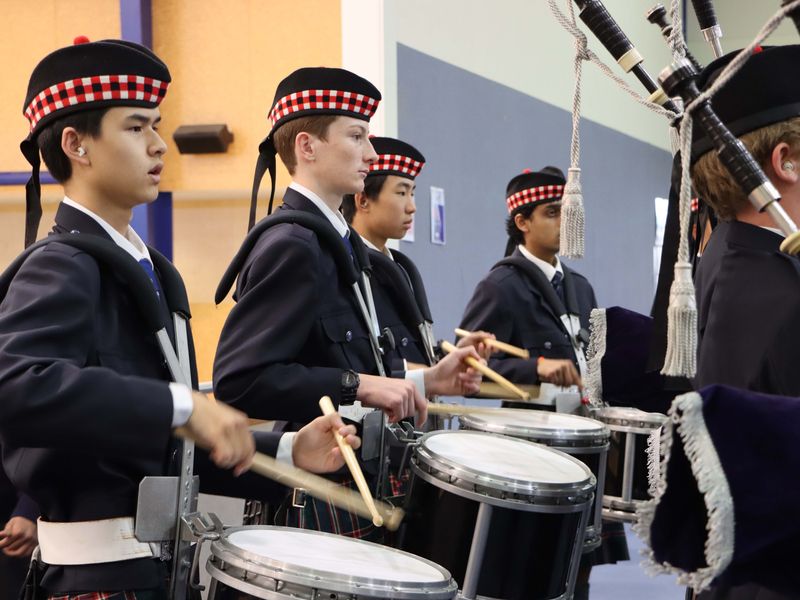
Wishart Win First College Tug of War
Wishart Win First College Tug of War
May 10, 2021 at 11:19 AM
‘Take the strain. Ready. PULL!’
Muscles were strained, faces were red and spectators cheered from the side lines as competitors from each Year level took a firm grip on the rope to see which team could heave the hardest for House victory.
The House Tug of War competition was a first for the College on this scale, running over several weeks during ETT (Extended Tutor Time) in Term 1. On the days allocated for each Year group, the students gathered on the field, or in the gym when it rained, to test their collective strength. Each team had 15 members with a minimum required split of five per gender. One minute was assigned to each round with three points assigned to a win. If neither team had pulled to House victory in the allotted time, then two points were assigned to each team.
Aside from the raw muscle power needed for tug of war, it also required team synergy. The cooperation or ‘rhythm’ of the team members played an important part in their victory, maybe even more than their sheer physical strength – they needed to pull together! With all the tutor groups from each House gathered around, supporters also took on a role - coaching from the sidelines to bring the teamwork into play, giving those ‘on the rope’ that extra lift to pull that little bit harder.
On the days when the summer sun shone down, this was a fantastic House activity to bring the students out into the sunshine for fresh air and fun. When it rained, the energy and cheers in gym gained in volume as the students urged each other on!
Pulling with all their might, Wishart were crowned the eventual winners!
The History of Tug of War
The origins of tug of war are uncertain, but it is known that this once ‘royal sport’ was practised in ancient Egypt, Greece and China, where it was held in legend that the Sun and Moon played tug of war over the light and darkness.
In later years, tug of war stories abound about heroic champions from Scandinavia and Germany, where Viking warriors pulled animal skins over open pits of fire in tests of strength and endurance in preparation for battle and plunder.
During the 16th – 17th century, tug of war was popularised during tournaments in French châteaux gardens and later in Great Britain. During the 19th century, it became a new tradition among seafaring men who were required to tug on lines to adjust sails while ships were under way and even in battle.
This show of strength has taken many forms from linking arms, to holding on to waists and the more familiar rope pull.
In Greece, the cradle of the ancient Olympic Games, tug of war was a sport around 500 BC, practised by athletes either as a competitive sport or as an exercise in the physical training for other sports. In the modern era of the games, it featured from 1900 to 1920 with Sweden, Great Britain and the USA dominating the medal table. To this day, there is Tug of War International Federation that competes regularly!









